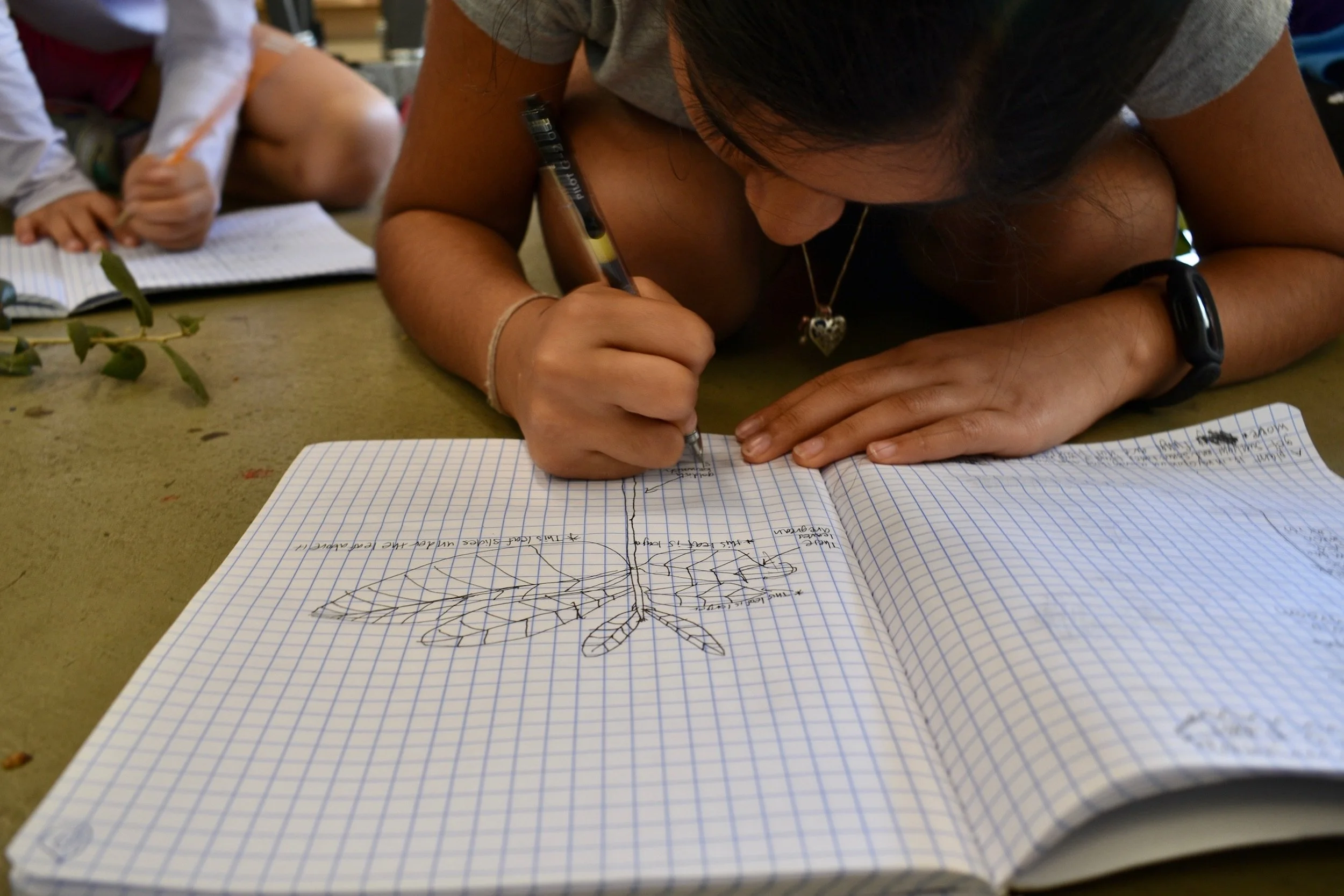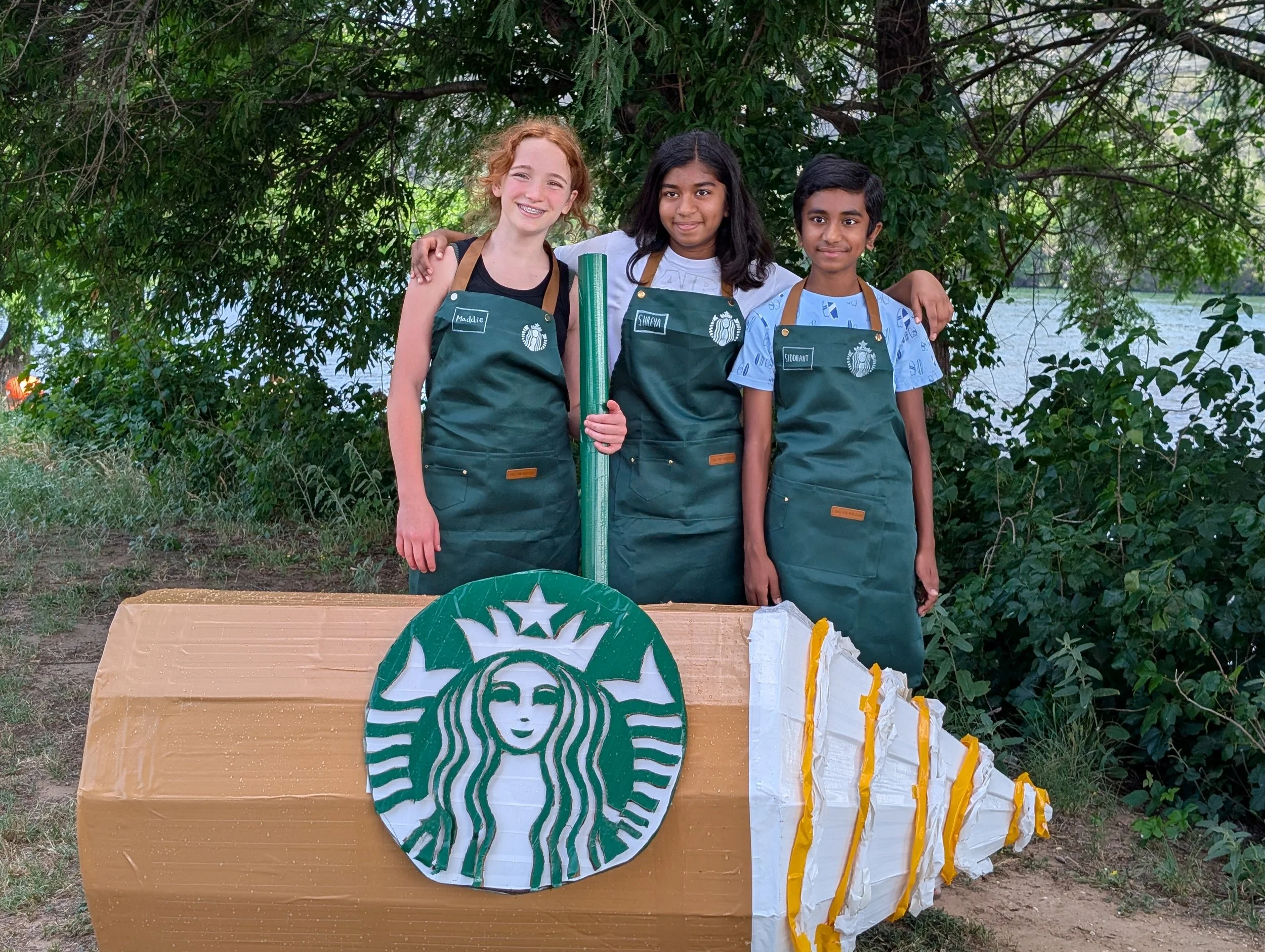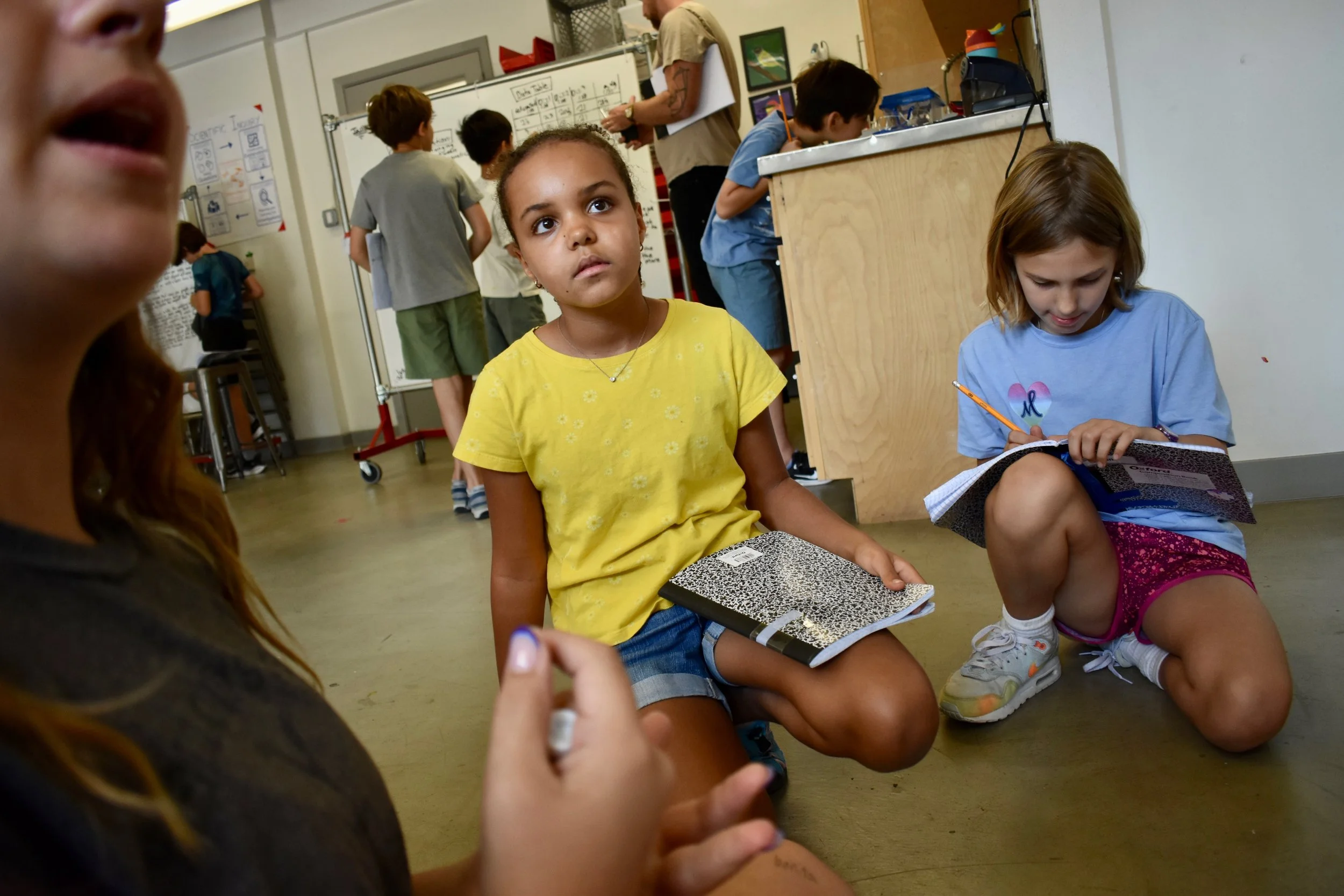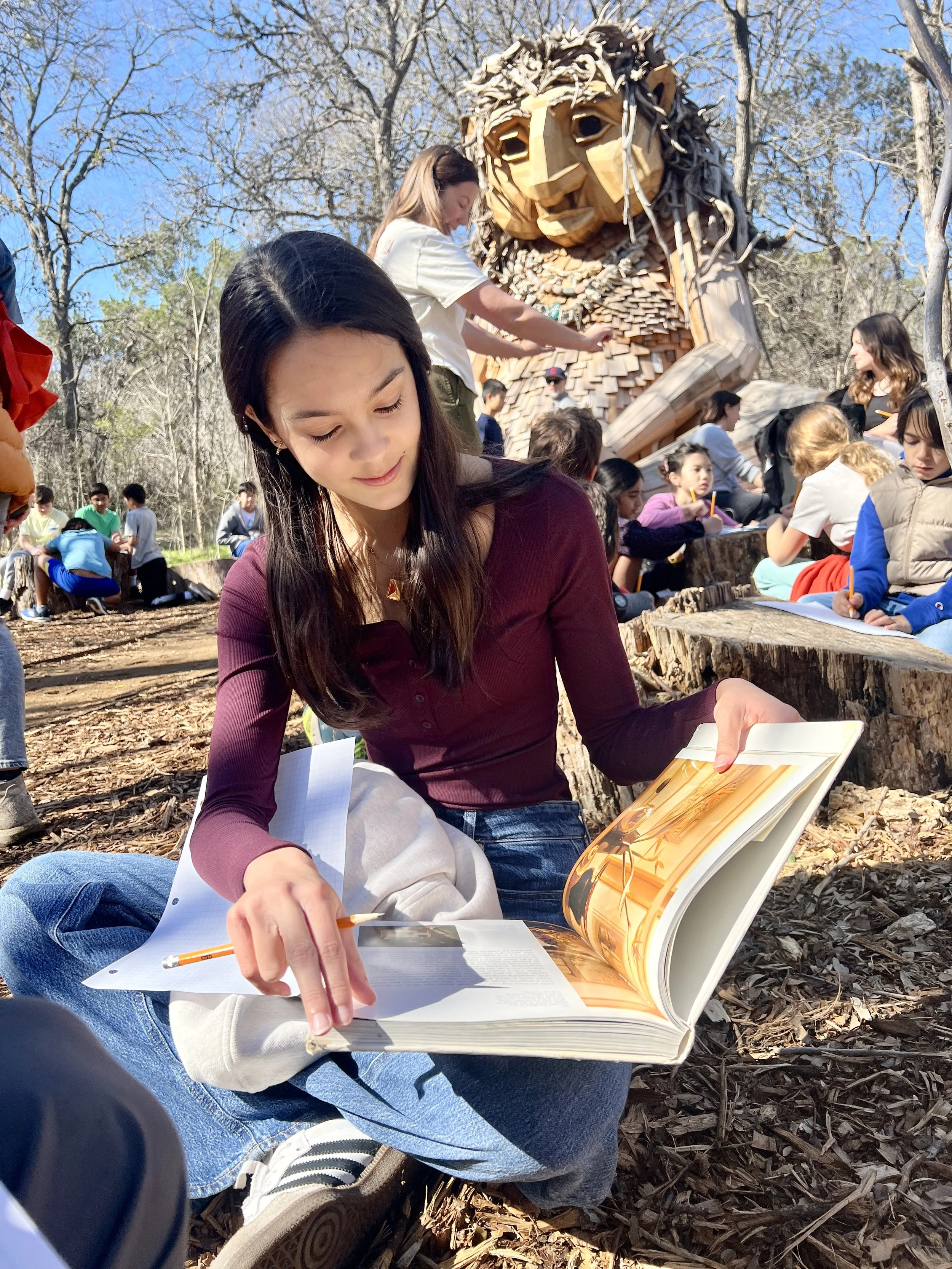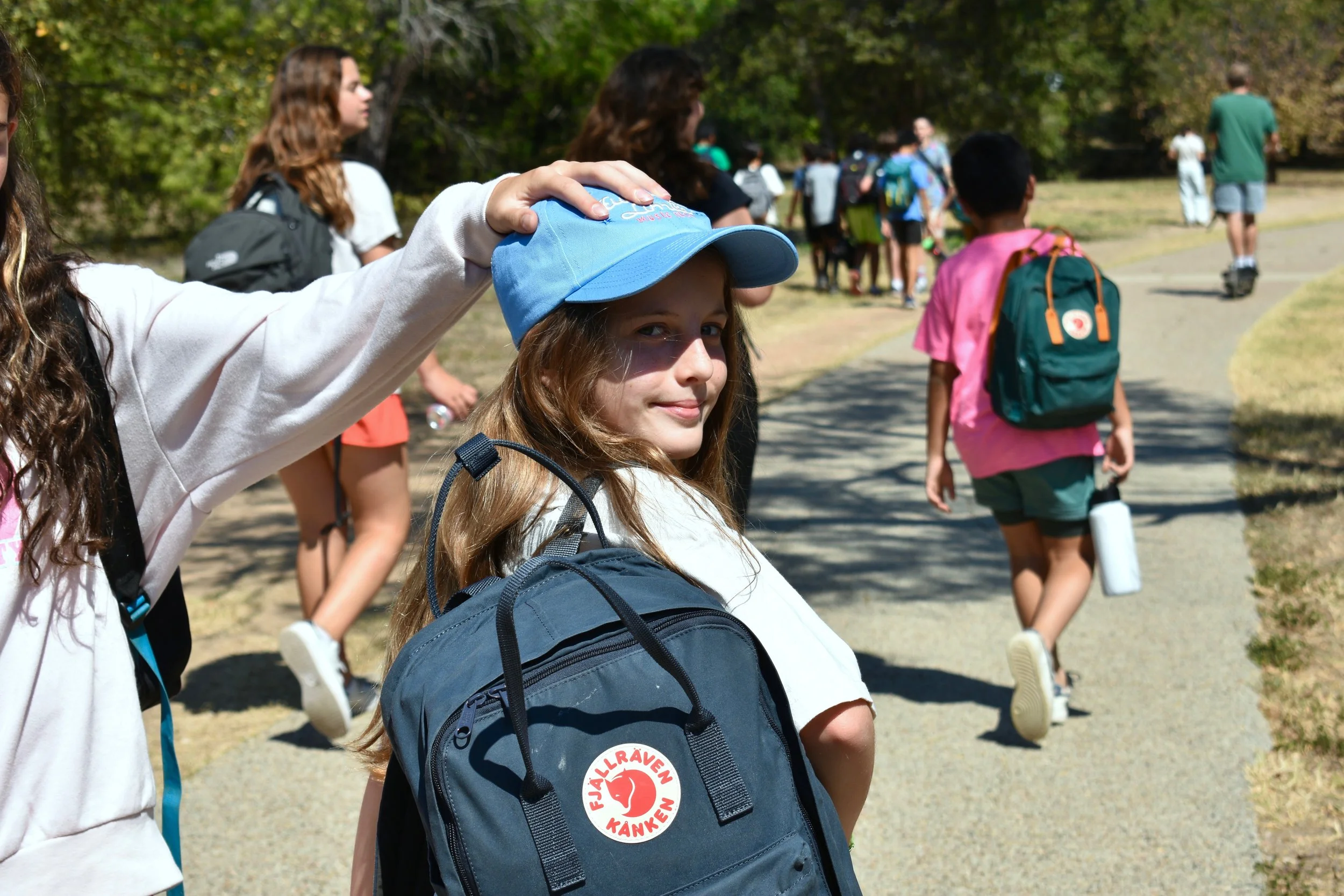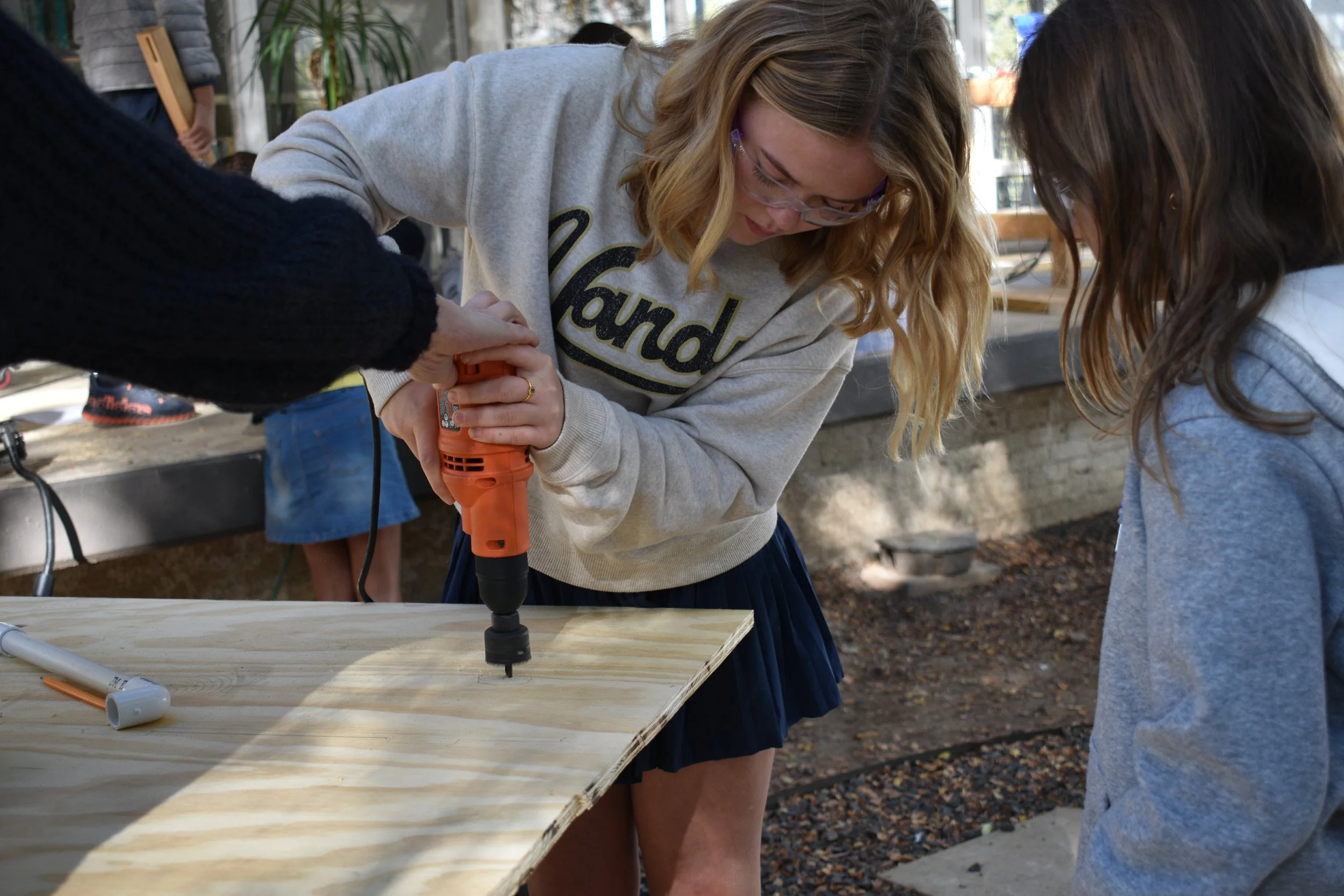We are thrilled to announce the debut of our very first literary magazine, The Red Couch Review. This 81-page collection features original fiction, poetry, and memoir, all submitted by our talented learners. The magazine was thoughtfully assembled by a student editorial board led by Ms. Weller, and features cover art created by one of our own. We invite you to explore and celebrate the creativity, writing talents, and voices of our community—read The Red Couch Review.
Read MoreEvery spring, there’s a singular energy that builds in our community—a blend of anticipation, nervous excitement, and the unmistakable rustle of cardboard. On May 2, the Loop 360 Boat Ramp Park came alive as we held our ninth annual Cardboard Boat Regatta. Seventeen boats, each thoughtfully crafted by our learners, took to the waters of Lake Austin in a spirited event that highlights creativity, problem-solving, and collaboration.
We’re especially grateful to Travis County Parks for providing this beautiful park as the perfect setting—open space and sparkling water—for our event. This treasured community resource created an inspiring backdrop for our students to put their ideas to the test.
But the regatta is about much more than launching boats on the water. It’s a hands-on exploration of physics, problem-solving, and resilience. Over several weeks, teams worked together to design, build, and refine their boats, learning firsthand about buoyancy, balance, and resilience….
Read MoreWalk into any classroom or workplace today, and you’ll likely hear talk of “soft skills.” Communication, empathy, collaboration, adaptability—these are the qualities that shape how we relate to one another and navigate the world. Yet, the term “soft skills” does these abilities a disservice. Not only are these skills among the hardest to master—and teach—but they are also the most durable, especially as technology, including artificial intelligence, rapidly reshapes our world.
The Case for a Rebrand of “Soft Skills”
The phrase “soft skills” suggests something secondary or optional—a nice-to-have alongside the so-called “hard” skills of math, science, technical expertise, or other “academic” knowledge. But research consistently tells a different story. The World Economic Forum’s Future of Jobs Report (2023) identifies analytical thinking, creativity, and resilience—alongside empathy and collaboration—as the most in-demand skills for the future workforce. These are not peripheral; they are central and it is a disservice to call them “soft”….
Read MoreLast spring, we were thrilled to make our first visit to Pease Park’s newest (and largest) resident: Malin, the troll. Designed and built by artist Thomas Dambo, primarily from reused and upcycled materials, Malin joins over 150 other trolls created by Dambo, his team, and local volunteers for locations around the world.
Pease Park occupies a special place in our hearts at Long-View. Every school day, we walk there for lunch and an hour of play, and often for special projects like nature writing or ecology studies. We were commissioned by Pease Park Conservancy to help Malin prepare for her 1st birthday party, and Build Week 19 was born! We were eager to help our beloved park by designating a week to build a set of colossal, upcycled decorations….
Read MoreOver the course of the last year, the Long-View teaching team spent a great deal of time thinking about technology use within the age bracket of our children at Long-View. While we want to teach our kids how to harness technology and leverage it for future work/career, we are also concerned about the negative impacts of daily technology use on young brains and on children’s social systems. The negative effects seen at Long-View are typical of what all schools experience such as tired kids or pre-teens who are hurt by interactions with friends via social media.
In addition, the AI surge has really caught our attention as we work to teach independent, critical thought. We are doing everything we can at school to talk about these issues and to teach productive and safe usage of technology.
We have compiled our thoughts on select topics—the ones that impact children and school life the most. We ask that families at Long-View, as well as prospective parents, join us in helping our community take a stronger stance….
Read MoreIt’s Thursday afternoon, and Build Week 18 starts with a call to action. Kenya Bostic, a certified veterinary technician and an animal enrichment expert from The Wild Animal Sanctuary in Colorado, calls in via Zoom to teach us about why animals in captivity so sorely need enriched environments that replicate the cognitive and physical challenges they would experience in the wild. She asks us: “How could you support animals in your community in this way?” We’ll answer the call across the course of the next week, as we build enrichment items for animals who need them at Austin Nature and Science Center, a haven in Zilker Park for a small group of native Texas animals who are disabled or otherwise unsuited to life in the wild….
Read MoreAt Long-View we make reading a priority and talk about “reading ambitiously.” It is our recommendation that children read for at least ten hours a week. While some of these reading hours occur during our day at Long-View, we have found a greater rate of success in reaching this goal when families set aside at least one dedicated hour at home, every school day, for their child to spend on reading. This is our minimum recommendation—meant for everyone, whether a child is an early reader or a fluent/experienced reader, able to navigate complex texts. A mountain of research supports the fact that success in reading is directly related to the amount of time a person spends reading.
At Long-View, we work to be sure that literacy instructional time goes to activities that involve “eyes on print.” We protect time for independent reading, and know that explicit and high-level instruction, access to high-interest texts, and time to read at length are crucial components within the school day. That being said, learners need even more time for independent reading than is available here at school….
Read More“What ‘behavior management’ system do you use?” This is a question we often hear from visiting educators, as well as prospective parents touring the school for admissions. We understand the general impetus for this question, prefaced around wondering whether our classrooms are “well run” or or “well behaved” or just based in curiosity with how we “deal” with children who might not be on task in the way we’d like them to be. In many schools, behavior management systems are almost a badge of honor for teachers, proudly displayed as evidence of a classroom under control. And believe it or not, some of us even sat through entire college courses dedicated solely to this topic!
However, the notion of a behavior management system does not square up with our philosophy at Long-View. First and foremost, we do not actually think about “managing” anyone’s “behavior.” We are interested in teaching children to productively engage in the learning process with agency, curiosity, and earnestness, and a system of managing behavior does not serve this goal. So be assured, we are not handing out popsicle sticks or changing cards from green to yellow to red….
Read MoreOn a recent afternoon in Lilac Band Literacy, the energy in the room was unmistakable as learners discussed a page from their current read-aloud. When Stars Are Scattered is a graphic novel adapted from the life story of Omar Mohamed, who spent his childhood in the Dadaab refugee camp, and who co-authored the book with noted graphic novelist Victoria Jamieson. Projected on the whiteboard in full color, five panels showed Omar and two friends discussing their dreams for life beyond the refugee camp: to become a lawyer, a social worker, and a teacher. As they contemplated the page, Lilac Band members engaged in a lively conversation about change in the central character. We captured a transcript of the last few minutes....
Read MoreLike other teachers and learners all over the country, we are adjusting to the rhythms of a new school year at Long-View and finding our way in new iterations of our learning community. As discussed in many of our posts, including this one from last spring, the idea of “learning community” is integral to the way we do school at Long-View.
These ideas may feel a bit foreign to many learners and even parents or teachers, since many of us (likely) were educated in classrooms that engaged in very traditional, behavioristic pedagogy. As adults who want to help children further contemplate these ideas, we might ask questions such as:
What are you realizing you might do differently to increase your own learning? What is different about a class that functions as a “learning community”? Learning is messy and hard work…what are you realizing is important to do in order to increase learning for yourself and others?
It is quite a journey for most kids to fully understand the ideas behind these questions. At Long-View, new learners get a lot of support from their peers who have been at our school for multiple years....
Read More
